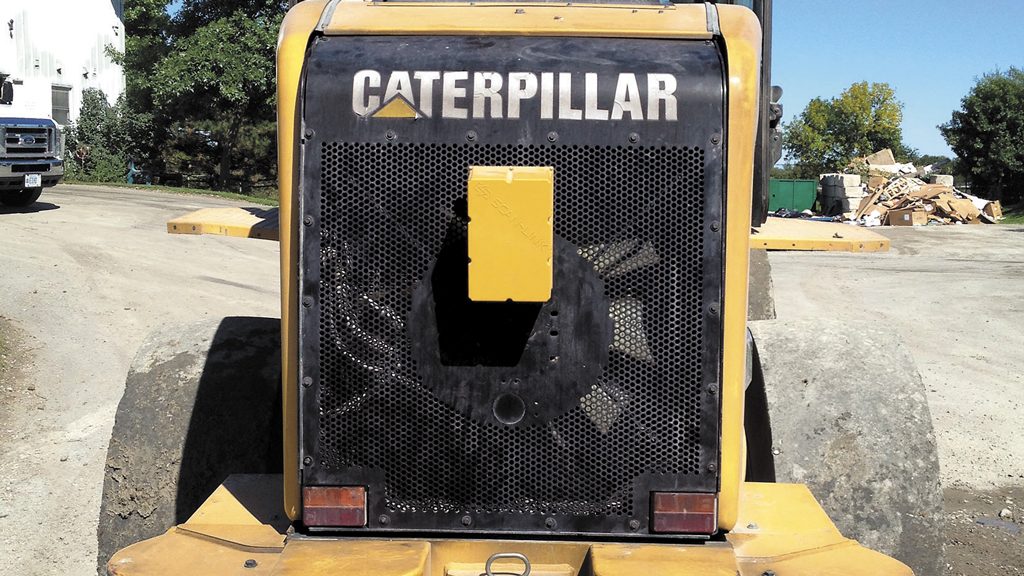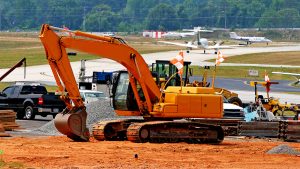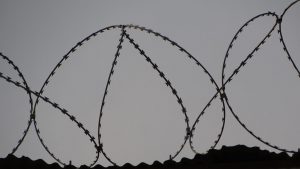A new leading-edge application of technology, which has found greater acceptance in the U.S., is now trickling into Canada and providing safety officers with another tool to create safer ground conditions for those working behind machines.
Peter Gibbons, who is Finning Canada’s B.C. regional technical manager, said the technology, which is known as Radio Frequency Identification (RFID) tagging is very new in Canada. Finning has sold three systems in Western Canada: one in the Fort McMurray, Alta. mining sector, a second now installed on a loader in at a dry land sort in Crofton, B.C. and Kiewit Infrastructure have also used RFID tagging on their machines at construction sites.
The systems are seen to gain an advantage in congested areas such as gravel pits, construction site, pipelines and mill yards. The technology is directional rather than 360 degrees, but has the advantage of operating in adverse conditions such as fog.
RFID technology is not complicated and has been used since the Second World War when its military application was used to spot enemy aircraft. Modern-day applications range from scanners reading credit cards and debit cards in stores, to chip identification in animals and even law enforcement applications where officer’s guns can be chipped for identification purposes.
Construction industry applications, in the past, have focused mainly on inventory control and mitigating theft rather than spotting those behind a piece of equipment or hazards a machine might hit.
“It is another tool,” said Jeff Davis, safety department manager for Kiewit Infrastructure projects in Western Canada, adding it is not a replacement for training for personnel and good on-site safety practices. The danger of relying upon any sensing equipment such as RFID is two-fold, he said, as operator complacency sets in (the alarm going off too often and is disregarded) and a false sense of security (operator and staff relying upon the system too much) rather than using other safety measures such as shoulder checks or back-cameras. RFID systems, he said, can contribute to workplace safety but only under the right conditions.
Finning is marketing several systems but others exist. The systems work by placing an antennae box onto the rear of the machine working in close proximity to ground workers or vulnerable structures. RFID tags which carry a chip respond to the antennae box. There are several manufactures of the RFID tags and they range from strips attached to items to chips imbedded in clothing items such as vests and hard hats.
The antenna’s radio frequency recognizes an RFID tag; it sends an audible alarm in the operator’s cab warning the equipment operator. At the same time, the external audio alarm is warning the ground worker that he or she is in a danger zone.
Caterpillar, which is distributed by Finning in Western Canada, has its Cat Detect, which is a total package including other Cat products but also distributes a second version Scan-Link Armour System, originating in Eastern Canada. The systems can be adapted to any size of equipment. Kiewit used the Scan-Link system. The Scan-Link system is also being trialled on Vancouver Island in the forest industry in a busy dry-land sort application where scalers, machines, pick-up trucks, waste bins, debarkers and stacks of logs all challenge equipment operators.
Scan-Link co-developer Jonathan Fava, based in Ontario, said his system has been five years in the design and evolution stages but in 2014 the technology took off and has been growing in usage, mainly with U.S. companies including the construction sector.
“This was a new way that safety was going, where you could tag a person or a random object,” Fava said.
Previous back-up systems on equipment have used radar or sonar type system, which needs a ground clearance level behind the machine to avoid false positives. If a ground worker collapsed on the ground, these systems will scan over that person. Fava says his system recognizes any RFID tags, whether on a prone or upright person.
The system can also be used to protect critical structures. He says the Scan-Link system has been used on a New York bridge construction site where a client did not want rolling stock on site to hit any bridge columns under construction. The columns as well as ground workers were outfitted with the RFID tags.
Another application, he said, has been in the waste removal and recycling industries. Debris trucks back into tipping floors, where a loader will remove debris.
“The loader operator can detect anyone who is on the tipping floor,” he said. At the same time, entrances can be alarmed so that anyone entering the area (who is tagged) will be noticed.
“It can flash a red light,” Fava, as it (alerting all those in the area that another person is entering) and also alerts the loader operator.
The B.C. forestry trial at TimberWest’s Crofton dry-land sort addresses many of the basic concerns seen in congested work areas where men and machines interact. A dry-land sort has stacks of logs, debarkers, waste bins, pick-up trucks, scalers and support staff on the ground, plus other equipment. Spuzzum Contracting has equipped a Finning Cat 980K wheel loader with the RFID to prevent back-up incidents.
Spuzzum company owner Alben Stromquist said TimberWest has been on a campaign to reduce its accident rate and opted to pay for the expense of placing the equipment if Spuzzum would trial it.
Son Jessie, general manager at the dry-land sort, said the real advantage that the system gives is another layer of protection against hitting objects or individuals on the ground. Because of emission standards, equipment today sees higher and larger housings over engines making it harder for an operator do a standard shoulder check when backing up.
“We do have a back-up camera in the loader as well,” he said. “The camera is now one part of the tools now for checking behind the machine along with the RFID. The RFID broadens it. You capture a little bit more information.” He said the audio warning both inside and outside the operator’s cab adds to that protection when the operator doesn’t check the camera or forgets to make shoulder check.
The system has been working for six months and Stromquist is impressed with the system. While it is directional, it can be adjusted to partially scan to the sides. There are two aspects to any accidents, he said.
“There is mechanical failure and human failure,” said Stromquist.
The human failure can be over-reliance on a system or failure to follow standard safety procedures while the mechanical failure can be mitigated through equipment checks. Stromquist said that despite checking the equipment regularly, operator still need to follow standard safety procedures and not rely totally on any one system.
Finning customer service representative Dave Price, out of the Nanaimo office, said the system can also be used in situations where an operator might be working alone on a site. RFID tags can be placed on lighting poles, for example or “anywhere there is a hazard around you.”
“It is a really an extra set of eyes,” Price said.











Recent Comments